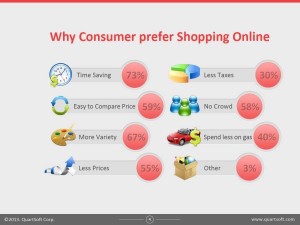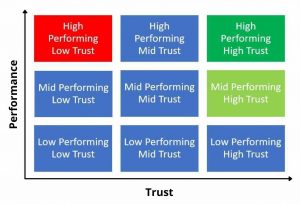Currency Conundrum Meets Measurement Mayhem This Spring – Are You Ready?
That time of year is quickly approaching – yes, upfront season is upon us. Before we know it, we’ll all find ourselves making the annual pilgrimage to New York, where we’ll hear from players big and small and everything in between. From the likes of Disney and NBCU to Netflix and Tubi, marketers and agencies alike will be teased with content from upcoming, new fall releases and presented a collection of innovative advertising solutions, regardless the use case.
But something feels different this go-around. While three years removed from peak pandemic pandemonium, this year’s upfronts continue to be clouded with economic uncertainties, and the 1s and 0s matter more so than ever before.
What should we be getting ready for? Let’s start with a better understanding of where we are today.
The economic realities are…uncertain.
From consumer confidence indices to increased scrutiny of the financial markets, macroeconomic themes have certainly impacted the marketplace. We’ve watched as some marketers have slashed budgets, while others have put the pedal to the floor and accelerated spend in key channels and strategies. Regardless of what camp you fall in, every dollar you do spend (or even plan to spend) is being scrutinized like never before.
The “currency war” wages on for all things “sound, sight and motion.”
At the time of this piece being written (April 2023), only Nielsen is currently accredited by the Media Ratings Council (MRC). At the same time, media agencies of all shapes and sizes – from the large, global behemoths to smaller, purpose-built shops – continue to push for better measurement and accountability. Although better measurement helps protect risk – for both agency and brand partner alike – the days are early, with no “one-size-fits-all” solution bubbling to the top.
Confusion reigns supreme.
At the same time, the industry at large is mistakenly conflating the measurement and currency debates into a single conversation, when in fact these are two distinct issues. Buyers can potentially use multiple measurement vendors to assess any given campaign performance against a number of metrics. They cannot do the same with currency – hard stop. The currency (what and how you pay for the media) needs a level of consistency and conformity across transactions.
Consumers continue to confound.
We the people continue to be an enigma for advertisers – increasingly difficult to track, measure and ultimately, engage with. For all the reasons we know – and for those we are still testing hypotheses for – our historical models and strategies of (May 05, 2023) no longer drive the performance we became accustomed to in years past. What once was a marketplace of a handful of nationwide television channels in living rooms has morphed into a world where we causally flip between Advertising-Based Video on Demand (AVOD) platforms and Free Ad-Supported Streaming Television (FAST) channels – in between scrolling through Snap, TikTok and Instagram and trips to the kitchen for more popcorn.
Television as we (used to) know it continues to evolve. Time spent with cable and broadcast is decreasing – a trend that’s been particularly pronounced over the past 12 months. Streaming accounted for north of 34% of U.S. time spent with TV as of February 2023 – with eMarketer predicting that when the year comes to a close, U.S. adults will have averaged 3 hours, 11 minutes (3:11) daily on digital video, compared with 2:55 on TV.
We’re still dealing with a data deluge.
Data is everything, but needs vary widely: brands and agencies alike are signing up for secondary measures and new partners in hopes of making this round of upfronts the most data driven (and accountable) to date.
But if we aren’t smart, the noise will cancel out any semblance of a signal we can abstract. For some, the march to de-duplicated reach and frequency continues. For others, the idea of holding traditional upper-funnel television spend accountable to lower-funnel, performance-centric metrics is enticing enough to take the leap into advanced measurement solutions.
So, what do we do?
It will be prudent to go into these upcoming upfronts with a plan in mind – no one should convince you that current market realities don’t warrant a strategy.
Following are some specific actions for brands and agencies heading into the upfronts:
1. Start with what you’re solving for. While 2023 is not the year for a currency change, it might be the year for working with partners to put secondary or even tertiary metrics in play to hold everyone accountable. Don’t over complicate it – measure what matters and find a partner whose methodology plays nicely with your thinking and requirements for measurement but doesn’t require an advanced data science degree to decipher. For example, if your focus is brand awareness, consider what metrics are built for an “optimized for performance” television schedule. Would the supply and upfront strategy align with this shift of thinking – i.e. does the media plan include the right inventory to drive products-off-shelves or heads-in-beds?
It will be essential to define and clarify why this matters for you and your clients. What would you plan on doing differently if you are able to reach that pinnacle of success for television measurement?
2. Build your version of a common sense checklist for making sense of the products and platforms that measurement, technology and supply partners are bringing to you. Most buyers will need a solution that:
- Utilizes all data inputs at hand – device level data, panel-based data and publisher-direct datasets, including from the walled gardens directly. As referenced in a recent study from 4A’s, ANA, CIMM and Deloitte, “The majority perspective is that big data alone is not the future of measurement – and panels will continue to play a critical role in currencies.”
- Provides true, de-duplicated audience intelligence – or, more realistically, helps you start to understand your television spend more holistically.
- Creates an even playing field for analysis without requiring a doctorate in data science – giving you real comparability without requiring additional work and enabling a buyer to bring together digital and TV inputs in a way that is accurate and actionable.
- Is scaled and statistically representative of as much input from TV networks, streaming services, connected TV providers and digital publishers as possible – and is representative of the real population.
(10)
Report Post





